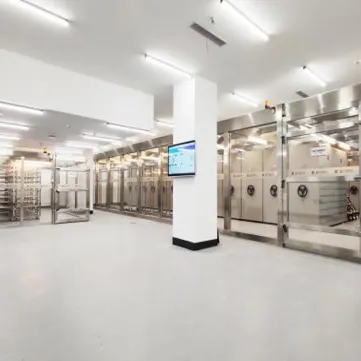Developing and caring for collections is a critical aspect of managing museums, libraries, archives, and other cultural institutions. Collections play a vital role in preserving and presenting our cultural heritage, history, knowledge, and artistic achievements. Proper development and care are essential to ensure the longevity and accessibility of these valuable assets for future generations. In this article, we will explore the key steps involved in developing and caring for collections.
The first step in developing a collection is to acquire and select appropriate items that align with the institution's mission and scope. Collections can be built through donations, purchases, or loans. Acquisition policies and guidelines should be established to ensure that items are relevant, authentic, and ethically sourced.
Creating a comprehensive collection development policy is crucial. This policy outlines the scope of the collection, criteria for acquisition, deaccessioning guidelines, and ethical considerations. It helps maintain a clear focus and ensures consistency in acquiring materials that enrich the institution's mission.
An accurate and well-maintained inventory and cataloging system are essential for managing collections efficiently. Each item should be documented, describing its provenance, condition, significance, and any associated documentation. Digital cataloging systems provide easy access to information and facilitate collection management.
Palace Museum
Preserving collections is paramount to their longevity. Preservation planning involves identifying items at risk, implementing conservation measures, and ensuring proper storage conditions to protect artifacts from deterioration, physical damage, and environmental factors.
Collections often require conservation and restoration to address existing damage and prevent further deterioration. Skilled conservators can assess items and carry out necessary treatments to stabilize and restore them to their original state.
Developing collections often involves collaboration with other institutions, collectors, or communities. Partnerships can lead to shared resources, knowledge exchange, and the creation of enriched collections through diverse perspectives.
Collections require appropriate storage to ensure their preservation. Items should be stored in controlled environments, including temperature, humidity, and light levels suitable for the material's needs. Acid-free archival boxes and folders protect paper-based items, while climate-controlled storage areas safeguard delicate objects.
Nitrogen-filled And Freezing Insecticidal System
Proper handling protocols are essential to avoid physical damage. Staff and visitors should be trained in appropriate handling techniques, including the use of gloves and handling aids. Controlled access to items reduces the risk of mishandling and loss.
Regular conservation assessments are necessary to monitor the condition of collection items. This includes routine inspections, cleaning, and maintenance to address emerging issues promptly. Implementing preventive conservation measures can significantly extend the lifespan of the collection.
Digitizing collections enhances accessibility and reduces physical handling, thus minimizing wear and tear. Digital preservation ensures that digital assets remain accessible over time through regular backups and migration to updated file formats.
Collections must be protected from theft, vandalism, and natural disasters. Implementing security measures, such as surveillance systems and restricted access areas, can prevent unauthorized access. Disaster preparedness plans, including emergency response protocols, are crucial to mitigate potential damage during unforeseen events.
Engaging the public with collections fosters a sense of ownership and promotes appreciation for cultural heritage. Exhibitions, educational programs, and outreach activities create opportunities for community involvement and support.
Occasionally, collections may need to be deaccessioned due to redundancy, irrelevance, or condition issues. Deaccessioning should be carried out following established ethical guidelines and institutional policies to ensure transparency and responsible handling of the items.
Developing and caring for collections is a multifaceted and ongoing process that requires a strategic approach, dedicated resources, and collaboration among various stakeholders. By adhering to best practices in acquisition, preservation, and accessibility, institutions can safeguard and present collections as invaluable resources for current and future generations to cherish and learn from. Properly cared for collections enrich our understanding of the past, contribute to cultural identity, and inspire future creativity and innovation.
 Museum Collection Storage Warehouse
Museum Collection Storage Warehouse
 Low Oxygen Constant Humidity and Clean Warehouse
Low Oxygen Constant Humidity and Clean Warehouse
 Museum Drawer Cabinets
Museum Drawer Cabinets
 Museum Wall Display Case
Museum Wall Display Case
 Low-oxygen(constant Humidity) And Clean Storage Cabinet
Low-oxygen(constant Humidity) And Clean Storage Cabinet
 Atmospheric-Pressure Low Oxygen Controlled Atmosphere Insecticidal Warehouse/ Cabinet
Atmospheric-Pressure Low Oxygen Controlled Atmosphere Insecticidal Warehouse/ Cabinet
 Museum Table Display Cases
Museum Table Display Cases
 Museum Exhibit Display Cases
Museum Exhibit Display Cases